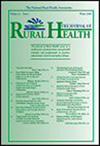An analysis of syringe service programs across the rural-urban continuum in the United States
Abstract
Purpose
Syringe service programs (SSPs) have been proven to reduce transmission of viral infections, prevent substance use and overdose deaths, and help support public safety in operational areas. This study aims to provide a snapshot of the current distribution of SSPs across the United States and analyze them based on community characteristics.
Methods
SSP information was collected from state health department websites and the North American Syringe Exchange Network (NASEN) dashboard. Bivariate, multivariate, and geospatial analyses were conducted on the study population to observe significant differences between SSP presence and access between urban and rural populations and to see if community characteristics impact the presence of SSPs.
Findings
Findings showed that a greater proportion of urban counties had at least one SSP compared to rural counties (N = 353, 30% vs. N = 236, 12% respectively, p < 0.001). The logistic regression model showed that urban counties had 66% greater odds of having an SSP than their rural counterparts. Geospatial hot-spot analysis showed significant hot spots in the West and Northeast United States, and cold spots throughout the Midwest.
Conclusions
This research provides the most current and comprehensive look at the current count of SSPs in the United States and highlights an increased need in rural areas for SSP presence and access. This study could be used as a benchmark for policymakers and other decision-makers, especially in rural areas, to properly allocate resources for SSP creation and to ensure that policy does not restrict the creation of SSPs or their ability to function properly.

 求助内容:
求助内容: 应助结果提醒方式:
应助结果提醒方式:


